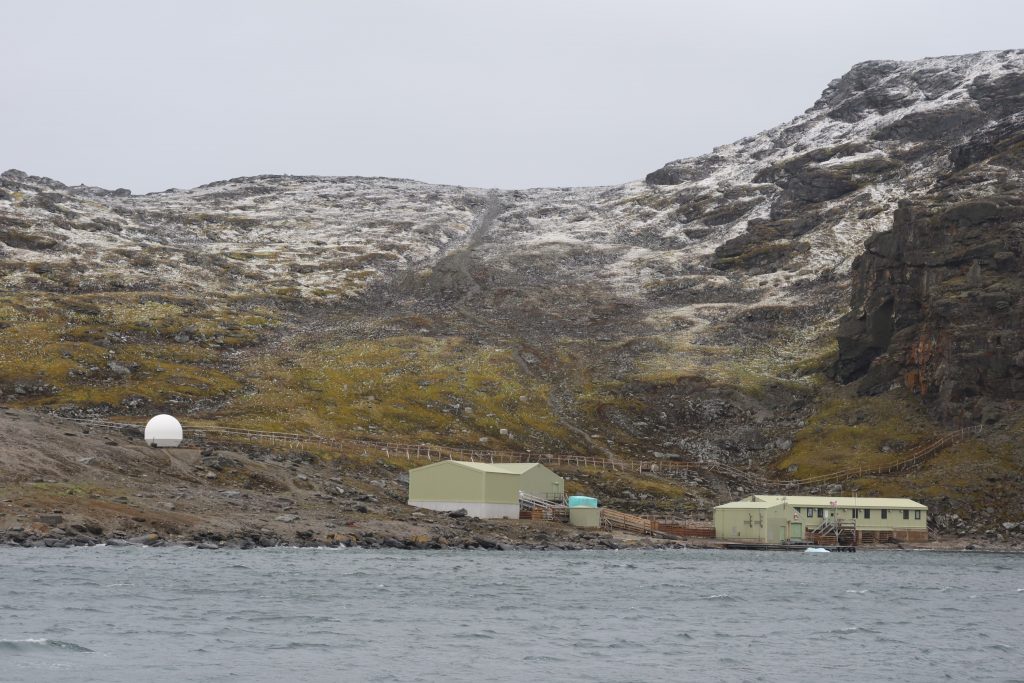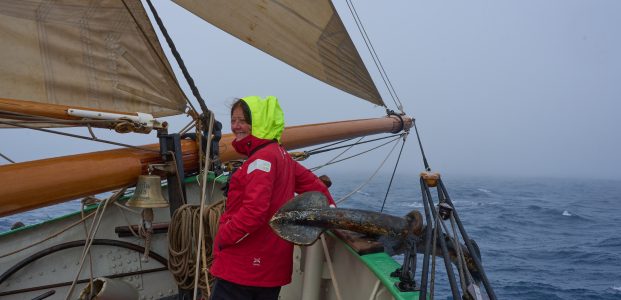While the weather forecast is not bad for heading to the Peninsula, it is not that good either as there is not enough wind or it is too unsettled, so we started off motoring. This gave us another taste of rock and roll as the seas once again bore no relation to the conditions! The start was not ideal at all. We had 32 knot winds hurtling down off the glaciers on the northeast coast as we headed past. This combined with weird short seas created by the wind and the swell coming round the corner of the island meant that at times we only made less than a knot against the seas. Eventually we made it past and over twelve hours or so things settled down a little. Not very comfortable at all.
We carried on motoring for around 30 hours, the last section with mizzen and staysail to stabilise us a bit. The wind then started to fill in from the northwest and we were able finally to turn the engine off. Shortly after we did, we saw our first iceberg. Actually, the radar saw it first from about eleven miles out. Despite a lookout at the bow, we initially didn’t see it and then, when it was about two miles away on the port beam the fog lifted a little and we saw it. Well, we couldn’t miss it really, it was massive! It felt almost like the size of a small country. Initially I thought the size of Monaco, but that would have been an exaggeration, so I went for an iceberg the size of Vatican City. Probably still an exaggeration (!), but it felt that way. The next one came up a few miles later and we had to head up to miss this one, passing just under a mile away from it. This one was smaller, perhaps half a Vatican City, but still impressive. The next ones came when there was fog as well, so we couldn’t actually see the scale of them, but we measured one at 1.7 miles across on the radar – definitely at least 2-3 Vatican Cities!
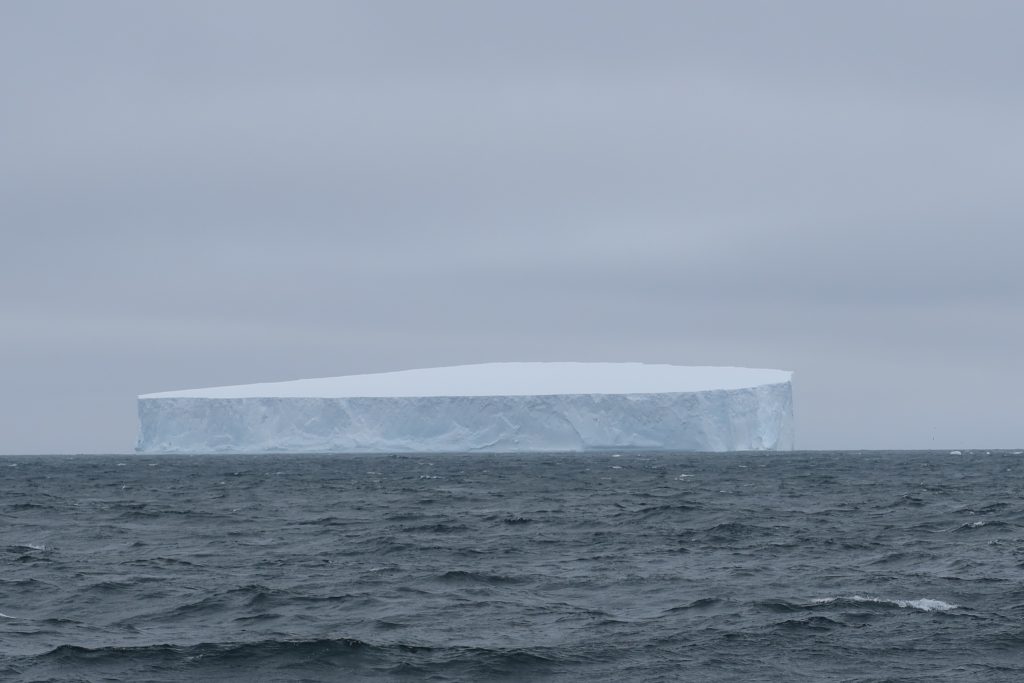
A good proportion of the time we had fog. Sometimes the kind of dank, cloying, all-enveloping fog where you can’t see anything at all and sometimes more a net curtain on the world. Either way, icebergs and fog don’t seem a great combination. The radar picks up most things, but the big icebergs almost all have a debris field of bergy bits which have dropped off. These can vary in size and some the radar sees, others it doesn’t, and it is these little growlers which are the ones we don’t want to hit. So, we always have a lookout posted at the bow with a VHF radio to warn the helm of any growlers. We restrict being lookout to around half an hour as at that point you tend to lose feeling in various parts of your anatomy and need to warm up a bit. With an air temperature of between -1oC and 1oC and a sea temperature of between 1 and 2oC, warming up is a challenge and it is always welcome to go below where at least the heating is on.
We lost the wind early on the 24th and the engine went on again. We had to motor for a while, but then around lunchtime the breeze came back from the south – exactly where we wanted to go! So we motor-sailed as close as we could to the wind, but this was far from comfortable and the short sea, unexpected in the southern ocean, kept stopping us dead. After around twelve hours though it eased and we started to make better progress in better visibility. It is reassuring when you can see the icebergs. The shapes and different patterns of them are fascinating. One large one had what looked like a ski jump on one side. The penguins had clearly worked this out and were relaxing at the bottom of the ski jump section. One looked like a frozen version of table-top mountain, while another looked like a cruise ship completely covered in snow and ice. One of the best was a small one that rocked from side to side in the seas, looking like a see-saw. The colours too were quite vivid. The blues within the icebergs were almost garish and many of them had bright blue cracks in them – perhaps where they had filled with water which then refroze? Others were quite grey and some even had black or brown sections all over them, presumably where they had picked up grit when moving down the valley and then frozen it within the glacier.
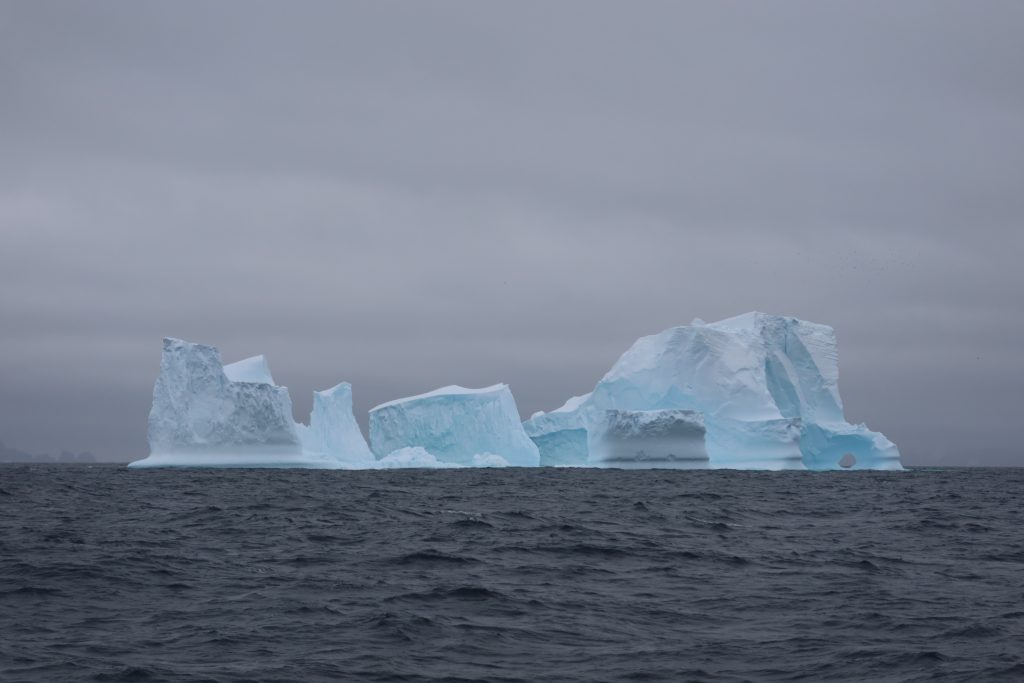
The cape petrels (or cape pigeons) started to fly all around the boat the closer we approached the South Orkney islands, looking like they had been dancing in an artists palette with black and white paint. An Antarctic fulmar with an identity crisis was flying with them some of the time. We also saw penguins swimming, whales and all manner of other bird life – giant petrels, snow petrels, albatrosses and so on.
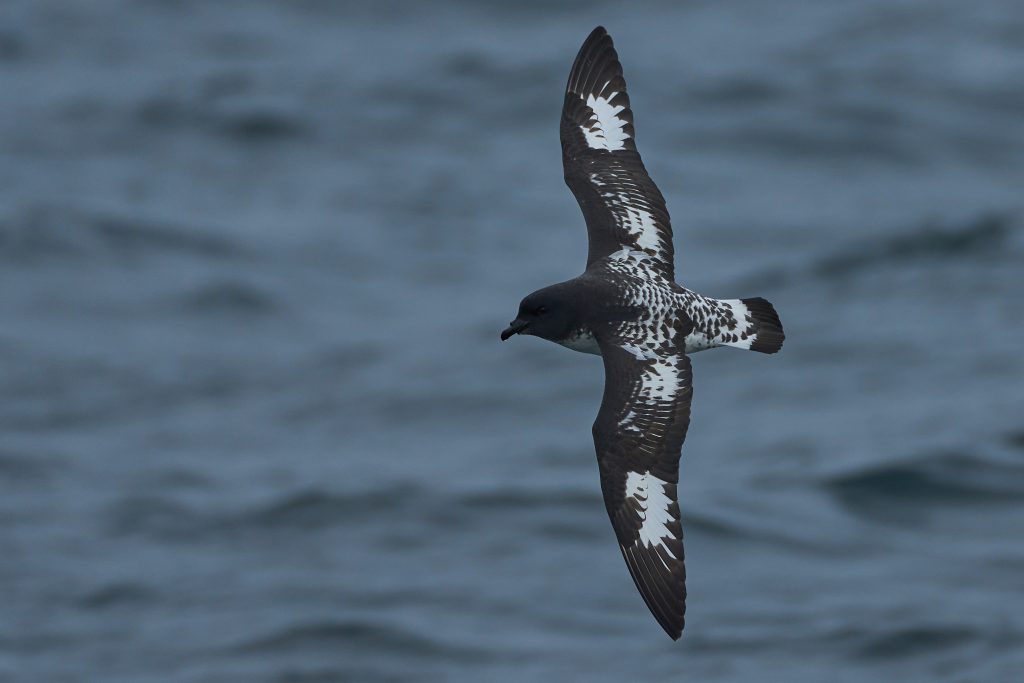
As we approached the passage between Coronation Island and Powell Island, the visibility closed in again, but the fog stayed at a ceiling height masking the tops of the mountains, but still giving us a view of the icebergs. These were everywhere and once again incredibly varied. We spotted one looking like a lower set of teeth, one that looked a bit like Darth Vader’s mask and one that looked d like a lion’s head. Or perhaps it was an overactive imagination given that I had been awake for two successive watches. We also had snow making it definitively a white Christmas as if being surrounded by glaciers and icebergs was not white enough!
All these icebergs meant masses of ice debris to work through, lots of little growlers and whingers (my name for the smaller growlers). Right in the middle of one ‘field’ of debris, the skipper stopped and with a boathook and net the crew gathered up a small chunk – apparently to go in the whisky later! Once through the gap between the islands we headed west again into the rising breeze and motorsailed towards Signy Island. Surprisingly we also encountered a fishing boat – the first ship we have seen in ages. We carried on past it into Factory Cove and tucked right in under the British Antarctic Survey base with two anchors out in anticipation of over 30 knots of wind, finally anchoring around 2pm. After a fairly challenging trip, it was lovely to settle down to a peaceful (for the moment) anchorage and Christmas dinner.
